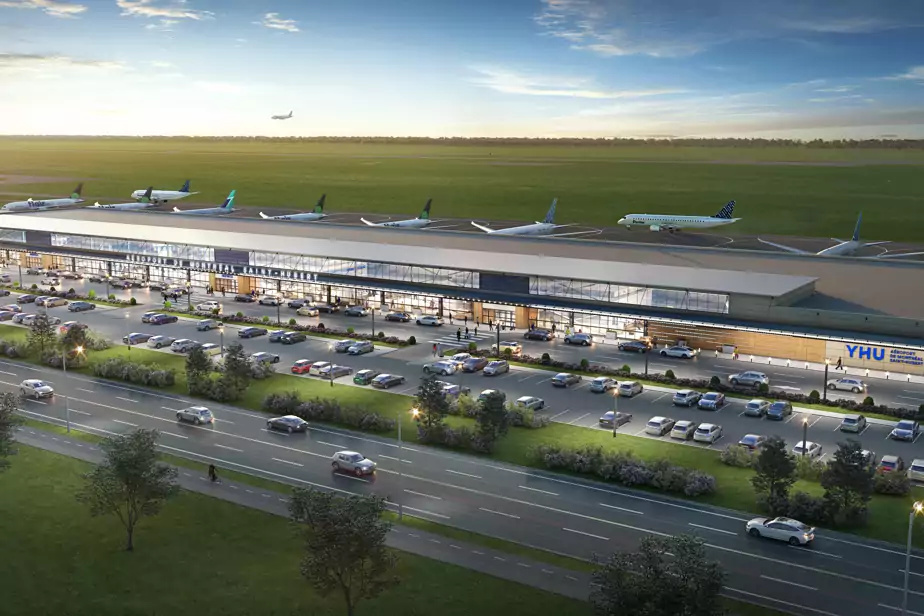Once inaugurated, the planned passenger terminal at Saint-Hubert airport should result in a reduction in noise impact of around 20% since it will accommodate less noisy aircraft, says a report prepared for the site operator . However, the project promoters still have work to do to win over the skeptics.
Stantec was mandated by the Montreal Saint-Hubert airport to carry out an “acoustic assessment of the project to increase activities” at the location.
“The modeling results show a reduction in the surface area included in the curves,” we can read in the document. This reduction is, among other things, attributable to the end of the activities of older generation aircraft, which are known to be noisier. »
Additionally, the terminal, due for delivery in 2024, will only accommodate “newer build” aircraft, such as the Embraer E-195 and Dash-8.
The modeling carried out by Stantec is theoretical. It therefore has certain limitations. Report results are defined as averages. Decibel levels will therefore be higher when an aircraft passes over a neighborhood following takeoff or when it is landing. This report is based on the “Ldn” index, frequently used in the United States since it gives an idea of the sound level. Stantec performed its simulations based on the “busiest” days of the year.
Result: at present, the area of the “Ldn 60” zone, or an average sound level of 60 decibels (the equivalent of a normal conversation), is currently 10 square kilometers. It should drop to eight square kilometers after the terminal comes into service. The Federal Aviation Administration (FAA) – the American government agency responsible for civil aviation – estimates that it is from “65 Ldn” that the “level of noise annoyance becomes significant”, underlines the Stantec report.
“We are pleasantly surprised,” says the airport’s vice-president of corporate affairs, Simon-Pierre Diamond. The modeling is extremely precise and was carried out with the planned aircraft schedules. We also took the worst-case scenario with the busiest days. There is room for maneuver. »
Work on the terminal built by Porter Airlines – which will be its main user with Pascan Aviation – is already underway. There will be nine boarding gates which should ultimately accommodate more than 4 million passengers. This project raises many questions in the surrounding area of the airport, where citizens fear the negative repercussions of the airport’s expansion ambitions.
After reading the Stantec report, Mathieu Péladeau, president of the Aircraft Anti-Pollution Committee – Longueuil (CAPA-L), is far from convinced. According to him, the document only addresses one issue of the expansion project and contains “very preliminary and optimistic” projections.
Mr. Péladeau is not convinced by the report’s hypotheses. He believes that “real tests with real planes” could have been carried out before work began.
“There, we are only justifying a project already under construction,” he laments.
In Saint-Bruno-de-Montarville, municipal councilor Marc-André Paquette, who represents the district of the municipality “most attached to the airport”, is more nuanced. He considers that the document prepared by Stantec is a first step for “the discussion that will have to follow”.
He welcomes the “transparency” of the Saint-Hubert airport administration, recalling that this has not always been the case in the past. Mr. Paquette also has some caveats.
“The report model only takes into account projected activities at the airport, not necessarily volume at maximum capacity,” he says. We only include Porter. If we attract other airlines, this will add planes. All this can change. »
Stantec also notes that to get a better idea of “longer-term projections,” further modeling will need to be carried out once the terminal is operational, “i.e. two to three years after it is commissioned.”
